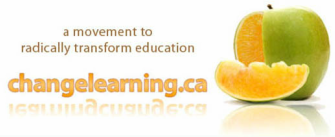|
Schools can’t do it alone. In an average calendar year, kids only spend about 14% of their time in school. After you take away the 33% of time they spend sleeping, you are left with 53% that is spent with family, friends and community1. In fact, research has shown that factors outside the school are four times more important in determining student achievement than factors within a school2.
If we truly want to provide the best learning opportunities for our kids, education needs to be more like a three-legged stool – with the structural support of home, school and community all working together. But here’s the thing. If all three legs are strong and equal, the stool is perfectly stable and functional. If one of the legs is damaged or removed, the stool can’t hold any weight. It can’t do its job, no matter how much we try to patch and reinforce the remaining legs.
John Abbott on True Education as a “Three-legged Stool”
Over the past 150 years, we have seen significant changes in society and family structures. And somehow, we have come to believe and expect that weakening in two of the legs (family and community) can be replaced by expecting more out of the remaining leg (school). Schools alone will never be enough. Learning can’t be the sole responsibility of teachers within the walls of a classroom, isolated from the rest of the world.
“When schools, families and community groups work together to support learning, children tend to be more successful in school, have fewer attendance problems, enroll in more challenging academic programs, stay in school longer, have better social skills and adapt to school more readily – and this relationship holds across families of all economic, racial/ethnic, and educational backgrounds and for all ages, including secondary 3.”
Parent Involvement
Parents are our first teachers. From conception through to four or five years of age, they have primary responsibility for a child’s development, growth and learning. The early years are critical in determining future outcomes, but it doesn’t stop when school starts. Home is always a major source of learning – from time spent in activities and discussions to parental attitudes toward education and the behaviour that kids see modelled daily. What happens or doesn’t happen at home affects how well they will be able to learn and succeed in other contexts. Read more. Community Involvement
It has been said that “schools can rise no higher than the expectations of the communities that surround them4.” Communities must recognize their shared responsibility in helping to raise caring, engaged and healthy young adults. Social capital matters. Children need safe, caring communities that value youth and their contributions and are invested in their development. They also need authentic opportunities for real-life learning, mentoring with experts and positive interactions with adults that are not their parents or teachers. Read more.
|
If the first few years of life include support for growth in cognition, language, motor skills, adaptive skills and social-emotional functioning, the child is more likely to succeed in school and later contribute to society. Featured VideoPrograms at Work |
Endnotes
1 J.D. Bransford, A.L. Brown, and R.R. Cocking (eds.) How People Learn: Brain, Mind, Experience and School. Washington DC: National Academy Press, 2000.
2 Kellogg Foundation study, as quoted in John Abbot and Terry Ryan’s, book The Unfinished Revolution:Learning, Human Behavior, Community and Political Paradox. Continuum International Publishing Group, 2000, p58.
3 Jordan and Rodriguez, Family and Community Connections with Schools, Why Bother? Orbit Vol 34, #3, 2004
4 Ernest Boyer. Ready to Learn,: A Mandate for the Nation. San Francisco: Jossey-Bass, 1991.
1 J.D. Bransford, A.L. Brown, and R.R. Cocking (eds.) How People Learn: Brain, Mind, Experience and School. Washington DC: National Academy Press, 2000.
2 Kellogg Foundation study, as quoted in John Abbot and Terry Ryan’s, book The Unfinished Revolution:Learning, Human Behavior, Community and Political Paradox. Continuum International Publishing Group, 2000, p58.
3 Jordan and Rodriguez, Family and Community Connections with Schools, Why Bother? Orbit Vol 34, #3, 2004
4 Ernest Boyer. Ready to Learn,: A Mandate for the Nation. San Francisco: Jossey-Bass, 1991.



